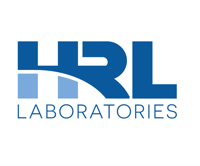HRL Laboratories
Electrical Test Engineer Undergrad Intern
General Description:
Exciting summer internship opportunity to work with a talented team of scientist and engineers focused on design, integration, and validation of leading-edge mixed-signal systems.
Essential Duties:
Perform testing, characterization, and assembly of advanced electronic and hardware assemblies.
Analyze, report and present test results to technical staff and management.
Required Skills:
Knowledge of fundamental electrical engineering and circuit design principles.
Experience using test equipment (e.g. VNA, TDR, oscilloscope)
Required Education:
Upper level undergraduate in Electrical Engineering, Mechanical Engineering, Physics, or related scientific discipline
Physical Requirements:
Must be sufficiently mobile to work within confined spaces and have both visual and hearing acuity.
Special Requirements:
U.S. citizenship is required.
Compensation:
The pay range for this position is $30 - $35 per hour.
Our pay ranges are determined by role, level, and location. The range displayed on each job posting reflects the minimum and maximum target for new hires for the position. Within the range, individual pay is determined by work location and additional factors, including job-related skills, experience, and relevant education or training. Your recruiter can share more about the specific range during the hiring process.
Top Skills
Similar Jobs at HRL Laboratories
What you need to know about the San Francisco Tech Scene
Key Facts About San Francisco Tech
- Number of Tech Workers: 365,500; 13.9% of overall workforce (2024 CompTIA survey)
- Major Tech Employers: Google, Apple, Salesforce, Meta
- Key Industries: Artificial intelligence, cloud computing, fintech, consumer technology, software
- Funding Landscape: $50.5 billion in venture capital funding in 2024 (Pitchbook)
- Notable Investors: Sequoia Capital, Andreessen Horowitz, Bessemer Venture Partners, Greylock Partners, Khosla Ventures, Kleiner Perkins
- Research Centers and Universities: Stanford University; University of California, Berkeley; University of San Francisco; Santa Clara University; Ames Research Center; Center for AI Safety; California Institute for Regenerative Medicine

